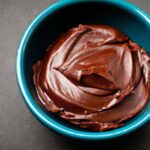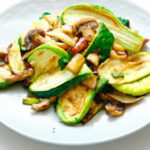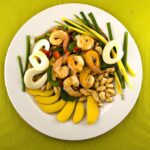In a world where dietary trends come and go, the ketogenic diet stands firm as a beloved choice for those seeking to ignite fat-burning and embrace vibrant health. But crafting the perfect keto plate is more than just swapping carbs for fats-it’s an artful balance, a science, and a delicious adventure rolled into one. From selecting the right ingredients to understanding the harmony between macros, this journey reveals the key principles that transform a simple meal into a ketogenic masterpiece. Join us as we unveil the secrets to building plates that not only satisfy your taste buds but also fuel your body for optimal performance and well-being.
Crafting the Perfect Keto Plate demands not only a keen sense for balancing macros but also a thoughtful approach to ingredient selection, flavor layering, and portion control. Achieving optimal keto results begins with choosing nutrient-dense components that fuel your body while keeping carb counts low. This recipe exemplifies how to harmonize taste, texture, and nutrition for a velvety, satisfying meal that supports sustained energy throughout your day.
Prep and Cook Time
Prep Time: 15 minutes Cook Time: 20 minutes Total Time: 35 minutes
Yield
Serves 2 generously
Difficulty Level
Medium – perfect for home cooks honing keto precision
Ingredients
- 200g organic chicken thighs, skin-on and bone-in
- 2 tbsp avocado oil
- 1 medium zucchini, spiralized
- 1/4 cup sun-dried tomatoes, chopped
- 2 garlic cloves, minced
- 1/4 cup heavy cream
- 1/4 cup freshly grated Parmesan cheese
- 1 tbsp fresh basil, finely chopped
- Salt and freshly ground black pepper to taste
- 1 tbsp fresh lemon juice
- 2 tbsp toasted pine nuts (optional, for added texture)
- 1 tsp smoked paprika
- 1/4 tsp red chili flakes (optional)
Instructions
- Prepare the chicken: Pat the chicken thighs dry; season generously with salt, pepper, smoked paprika, and red chili flakes. Heat avocado oil in a heavy skillet over medium-high heat.
- Sear the chicken: Place chicken skin-side down and sauté until the skin is golden and crisp, about 7 minutes. Flip and cook for another 6-7 minutes until cooked through. Remove and let rest, reserving the skillet drippings.
- Create the creamy sauce: Lower heat to medium, add garlic and sun-dried tomatoes to the skillet; sauté for 1-2 minutes until fragrant. Stir in the heavy cream, Parmesan cheese, and lemon juice; simmer gently for 3-4 minutes until slightly thickened.
- Toss the zucchini noodles: Add spiralized zucchini to the sauce; sauté lightly for 2 minutes-just enough to warm through while maintaining a slight crunch.
- Plate your keto masterpiece: Arrange zucchini noodles on plates; top with rested chicken thighs. Spoon remaining sauce over the top and garnish with fresh basil and pine nuts.
Tips for Success
- When selecting chicken, opt for organic thighs with skin as they provide both flavor and healthy fats essential for keto.
- Avoid overcooking zucchini noodles to keep their vibrant texture-too soft and they lose appeal.
- Switch out pine nuts for toasted walnuts or pecans if desired; they add a lovely crunch and boost omega-3 content.
- This dish can be prepped ahead: cook and refrigerate chicken and sauce separately, then quickly reheat and toss with fresh zucchini spiral ribbons just before serving.
Serving Suggestions
For elevated presentation, serve with a crisp arugula salad dressed lightly with lemon vinaigrette. Garnish with a sprinkle of extra Parmesan and a drizzle of high-quality olive oil. Pair with sparkling mineral water or a dry white wine to balance the creamy flavors and stay harmoniously keto.
| Nutrient | Per Serving |
|---|---|
| Calories | 520 kcal |
| Protein | 38g |
| Net Carbs | 6g |
| Fat | 38g |
Discover more about ketogenic meal timing and effective portion control in our comprehensive keto meal planning guide. For detailed science-backed insights on the benefits of nutrient-dense keto ingredients, visit the Healthline Keto Diet Benefits article.

Q&A
Q: What is the core idea behind crafting the perfect keto plate?
A: The perfect keto plate is all about balance-prioritizing high-quality fats, moderate proteins, and low-carb vegetables-to fuel your body into a state of ketosis. It’s a culinary blueprint that turns every meal into a harmonious dance of flavors and nutrients, keeping your energy steady and cravings at bay.
Q: How do fats play a role in the keto plate, and which ones are best?
A: Fats are the star players on a keto plate, providing the primary energy source. Opt for healthy fats like avocado, olive oil, coconut oil, and fatty fish. These not only satisfy your palate but also support brain health, hormone production, and overall vitality.
Q: Why is protein described as “moderate” on a keto plate?
A: Unlike some diets that emphasize protein, keto prefers moderation. Too much protein can convert to glucose through gluconeogenesis, potentially kicking you out of ketosis. The goal is to provide enough protein to maintain muscle and repair tissues without overdoing it.
Q: What kind of vegetables fit best on a keto plate?
A: Low-carb, nutrient-dense veggies steal the spotlight here. Think leafy greens, zucchini, cauliflower, and asparagus. They add crunch, color, vitamins, and fiber without spiking your carb count. Seasonal and organic choices amplify the freshness and flavor profiles.
Q: Any tips for combining ingredients creatively on a keto plate?
A: Absolutely! Think beyond the basics-blend creamy avocado with crunchy nuts, pair juicy grilled salmon with sautéed kale and a drizzle of herb-infused olive oil, or whip up a zesty cauliflower rice bowl topped with spicy ground beef. The key is layering flavors and textures to keep your taste buds intrigued.
Q: How important is portion control in perfecting the keto plate?
A: Portion control keeps your macros in check, which is vital for staying in ketosis. While fats should dominate your plate visually, proteins and veggies need to be portioned thoughtfully to maintain metabolic harmony and avoid unwanted carb overload.
Q: Can you suggest a simple formula to build a keto plate at home?
A: Certainly! Aim for roughly 60-75% fats, 20-30% proteins, and 5-10% carbs. Start with a generous serving of leafy greens and low-carb veggies, add a moderate portion of quality protein, and finish with a drizzle or dollop of healthy fats. Adjust as needed based on your energy and satiety levels.
Q: How does hydration tie into the concept of the perfect keto plate?
A: Hydration is the silent hero that complements your keto plate. Drinking water helps with digestion, supports kidney function, and reduces the common keto flu symptoms. Adding a pinch of salt or electrolytes can enhance mineral balance, making your keto journey smoother.
Q: What are some common mistakes to avoid when assembling a keto plate?
A: Avoid overloading on protein or sneaky high-carb ingredients like starchy veggies or sauces packed with sugars. Also, don’t skimp on fats-they’re vital to satisfaction and ketosis maintenance. Finally, neglecting variety can lead to nutrient gaps, so keep your plate colorful and diverse.
Q: How can someone personalize their keto plate to fit their lifestyle?
A: Personalization is key! Experiment with flavors you love, adjust ratios based on your activity level, and listen to your body’s feedback. Whether you’re a busy professional, a weekend chef, or an athlete, your perfect keto plate evolves with your goals and preferences.
The Conclusion
As you embark on your journey to craft the perfect keto plate, remember that this culinary adventure is as much about balance as it is about flavor. By embracing the key principles-prioritizing healthy fats, moderate protein, and low-carb veggies-you’re not just creating a meal; you’re designing a vibrant fuel source for your body. Let each plate be a canvas where science meets creativity, and let your taste buds celebrate the harmony of nourishment and indulgence. With these insights unveiled, the path to keto success is yours to savor, one delicious bite at a time.








